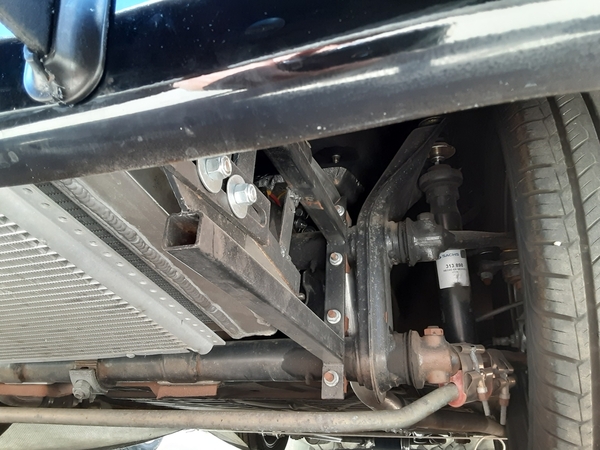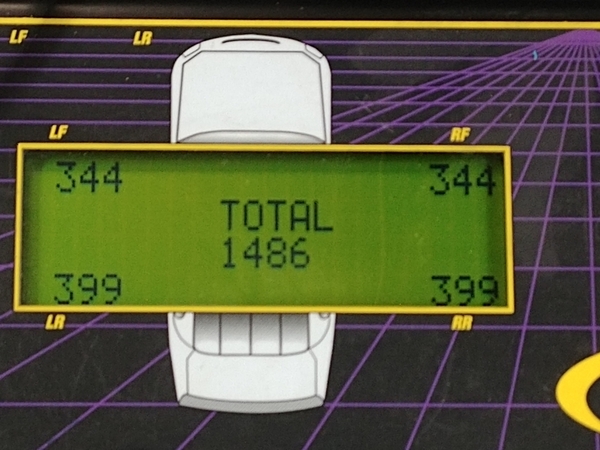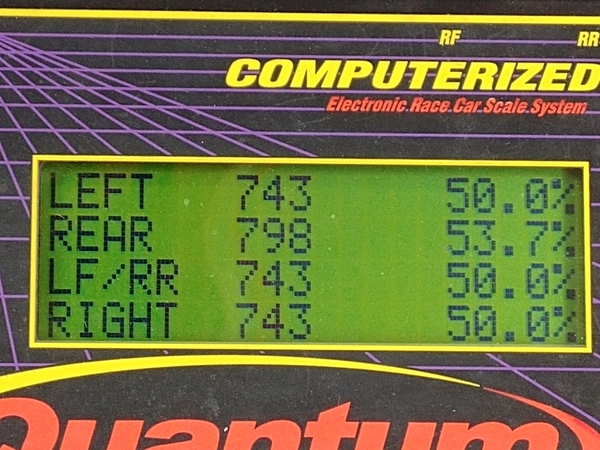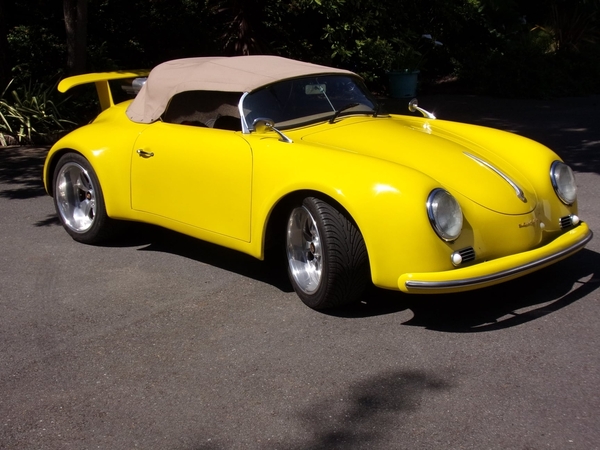Replies sorted oldest to newest
Nope. Just nope.
i'm calling that color LSD yellow...for obvious reasons
Must have cast iron weights in nose like early 911!
Porsche Used Cast-Iron Weights to Tame the Early 911 (roadandtrack.com)
@WOLFGANG not to divert from this post about a siily (IMHO) addition to that yellow car... i'm sure that subject has been covered here before...but, i'd like to be informed the proper way and how much weight is needed to do so to our cars.....pretty sure it would improve my car as well.....and FYI i have a radiator & A/C condenser living in that general area of space
(IMHO) addition to that yellow car... i'm sure that subject has been covered here before...but, i'd like to be informed the proper way and how much weight is needed to do so to our cars.....pretty sure it would improve my car as well.....and FYI i have a radiator & A/C condenser living in that general area of space
Attachments
Danny P has done some corner balancing - which would make a car handle better. DrClock has recommended using bags of pea gravel to add weight. A larger gas tank/battery to front adds extra weight too --- as does a spare tire and tools.
@jncspyder posted:@WOLFGANG not to divert from this post about a siily
(IMHO) addition to that yellow car... i'm sure that subject has been covered here before...but, i'd like to be informed the proper way and how much weight is needed to do so to our cars.....pretty sure it would improve my car as well.....and FYI i have a radiator & A/C condenser living in that general area of space
Jim Gilbert did an amazing job adding axle weights to the front of his Speedster. He has posted some very professional level CAD drawings too.
Corner balancing and a proper alignment can absolutely TRANSFORM a car's handling.
The same weight on each side, as close as possible. You can't do much about the general F-R percentage, it's in the car's basic design.
My Spyder is 45-55 F-R, Speedsters are biased rearward a bit.
But, by using scales under each wheel, you can get the sides even, as in not more on the LF versus the RF, you're better off. Diagonal weights should also be looked at, as in the LF and RR added together should be VERY close to the RF and LR.

These scale pictures are from when I did Mike's Spyder after doing the motor/trans and a bunch of other stuff(dry sump system, cooler, lines, cable shifter).
NAILED it! 46.3% front, 53.7% rear bias. The side to side is easy with rear coilover spring perches to adjust(or adjustable spring plates).
I believe the factory preference on the early 911 is no more than 7 pounds front difference, and 10 pounds in the rear. I balanced a few 911s about 20 years ago.
This car was weighed empty, but is MOSTLY driven with two guys of about the same weight. Usually, you want to do the corner balancing as the car is driven. This is especially important if it's usually driver only, then you need someone sitting in there, or you can use bags of sand.
I hope that's not too "technical" LOL. Pictures are always the best explanation, right?
Attachments
What about the weight of the driver? It seems like you would want it balanced with the driver's weight included.
Like Danny said, use sand bags or a volunteer of similar weight. On a speedster using a VW front and rear suspension, I believe that if you have adjustable rear ride height spring plates you can tweak a little and you'll get rear side to side and diagonal weight shifts. You can also use the splines on the rear torsion bars for grosser adjustments. I don't think you can do anything at the front without fabrication or adjustable height helper springs.
@DannyP thanx for that explanation....great info....but like @JMM (Michael) says, with the stock 1974 pan & beam front end & IRS rear transaxle...even with 4 decent shocks (which are not upper & lower control arms & adjustable coil overs) and sway bars...i'm still in confusion where and how much and location to add the specified correct amount of more or less ballast of what kind ie: lead, sand etc on all 4 corners to possibly help handling of my car....inquiring minds still need to know ![]()
@Michael McKelvey posted:What about the weight of the driver? It seems like you would want it balanced with the driver's weight included.
I said that above, that particular car is usually driven with 2 people of about the same weight. The suspension doesn't settle that much with 2 up. Anyway, front camber and toe won't change significantly with suspension drop, rear will just gain a little negative camber.
I don't use sand to balance the car, I use it to simulate driver weight.
Again, as I said, adjustable rear spring plates are essential on a pan car for fine tuning.
Maybe I can ask my wife to gain 50 pounds.
To be clear, @Michael McKelvey, (and @DannyP correct me if I'm wrong): You balance the Speedster or Spyder by changing the ride height adjustment on each rear axle, preferably with an adjustable spring plate. This is because, with the beam axle, the fronts only adjust together. But the rear axles adjust individually. If you lift up the left rear a little bit it puts ever so slightly more weight on the right rear and the right front, etc. If you have scales under each tire you can watch it happen. And if you have 185 pounds of sand bags (or whatever the driver weighs) you can simulate him or her sitting there while you do it.
For you and me, @edsnova, it’s more like 150 lbs. ![]()
@edsnova posted:To be clear, @Michael McKelvey, (and @DannyP correct me if I'm wrong): You balance the Speedster or Spyder by changing the ride height adjustment on each rear axle, preferably with an adjustable spring plate. This is because, with the beam axle, the fronts only adjust together. But the rear axles adjust individually. If you lift up the left rear a little bit it puts ever so slightly more weight on the right rear and the right front, etc. If you have scales under each tire you can watch it happen. And if you have 185 pounds of sand bags (or whatever the driver weighs) you can simulate him or her sitting there while you do it.
I set the car at the approximate ride height and alignment settings desired. I NEVER measure fender height.
Anyway, the corner weighting works diagonally. Reducing the preload on the LR reduces the RF as well, you'll see the LF and RR increase on the scales. After every single little adjustment, you need to roll the car off the scales, then back on to get the suspension to move/settle then weigh it again. This is especially important on swing axle cars, there is more tire scrub with suspension movement than most cars. Still very important to do on all cars. I found it VERY important on a 911 also.
@WOLFGANG posted:Must have cast iron weights in nose like early 911!
Porsche Used Cast-Iron Weights to Tame the Early 911 (roadandtrack.com)
Wow, that article was awesome Wolf! Think about it Jim who made up those plates and yes great drawings too, for his beam front end is only duplicating early P Engineering strategies ![]() . Good design on those plates BTW…
. Good design on those plates BTW…
When. I first got my car the alignment shop played with my front torsion pawl adjusters (911 front) and really screwed up it was pulling all over until IM correct it and corner balanced it. I think it is something I need to have redone sometime as well.
Several years ago a home builder here moved their battery to front wheel well just behind the horn vent to compensate for usual lack of a passenger. I'd like to either lower my battery 2-3" to get lower center of gravity and be able to add a temp spare tire (I have larger gas tank). I don't like adding dead weight as that pushes need for more horsepower. Al B/Yoda (here) uses another technique of drilling excess metal out to decrease weight (increasing effect of horsepower).






